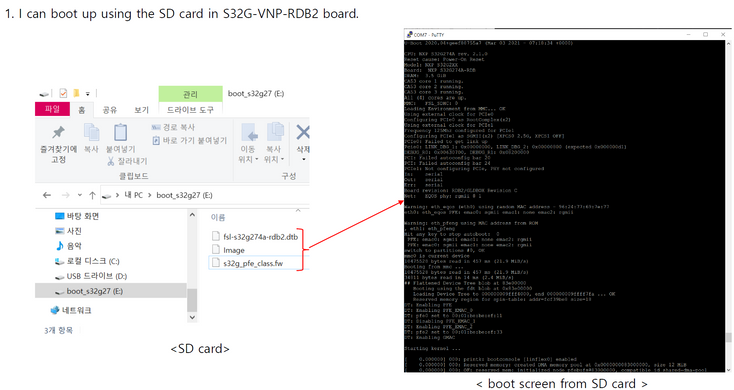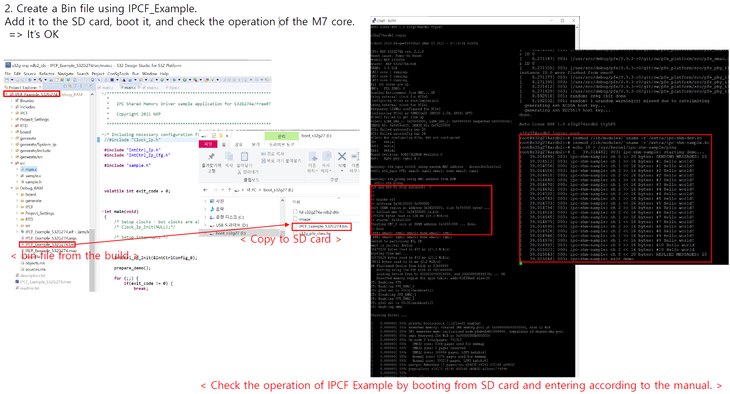- Forums
- Product Forums
- General Purpose MicrocontrollersGeneral Purpose Microcontrollers
- i.MX Forumsi.MX Forums
- QorIQ Processing PlatformsQorIQ Processing Platforms
- Identification and SecurityIdentification and Security
- Power ManagementPower Management
- MCX Microcontrollers
- S32G
- S32K
- S32V
- MPC5xxx
- Other NXP Products
- Wireless Connectivity
- S12 / MagniV Microcontrollers
- Powertrain and Electrification Analog Drivers
- Sensors
- Vybrid Processors
- Digital Signal Controllers
- 8-bit Microcontrollers
- ColdFire/68K Microcontrollers and Processors
- PowerQUICC Processors
- OSBDM and TBDML
- S32M
-
- Solution Forums
- Software Forums
- MCUXpresso Software and ToolsMCUXpresso Software and Tools
- CodeWarriorCodeWarrior
- MQX Software SolutionsMQX Software Solutions
- Model-Based Design Toolbox (MBDT)Model-Based Design Toolbox (MBDT)
- FreeMASTER
- eIQ Machine Learning Software
- Embedded Software and Tools Clinic
- S32 SDK
- S32 Design Studio
- GUI Guider
- Zephyr Project
- Voice Technology
- Application Software Packs
- Secure Provisioning SDK (SPSDK)
- Processor Expert Software
- MCUXpresso Training Hub
-
- Topics
- Mobile Robotics - Drones and RoversMobile Robotics - Drones and Rovers
- NXP Training ContentNXP Training Content
- University ProgramsUniversity Programs
- Rapid IoT
- NXP Designs
- SafeAssure-Community
- OSS Security & Maintenance
- Using Our Community
-
- Cloud Lab Forums
-
- Knowledge Bases
- ARM Microcontrollers
- i.MX Processors
- Identification and Security
- Model-Based Design Toolbox (MBDT)
- QorIQ Processing Platforms
- S32 Automotive Processing Platform
- Wireless Connectivity
- CodeWarrior
- MCUXpresso Suite of Software and Tools
- MQX Software Solutions
-
hi youngdae, so you can do the IPCF example integration without problem right?
for LLCE CAN, have you checked the CAN gateway project listed in GoldVIP? here we provided the Autocore (ASR OS) + configurations, you just need to follow the UM chapter 10 to try it.
GPT is a module covered by RTD which should have been used to build CAN gateway application.
for integration you might refer to the Integration reference examples.
for boot flow, you could refer to UM chapter 6 for more details. and there is a GoldVIP get started video available here covered.
hi youngdae, so you can do the IPCF example integration without problem right?
for LLCE CAN, have you checked the CAN gateway project listed in GoldVIP? here we provided the Autocore (ASR OS) + configurations, you just need to follow the UM chapter 10 to try it.
GPT is a module covered by RTD which should have been used to build CAN gateway application.
for integration you might refer to the Integration reference examples.
for boot flow, you could refer to UM chapter 6 for more details. and there is a GoldVIP get started video available here covered.
Hello, I am running into the same issue where the IPCF example works. But when I try to start my own M7 app from u-boot, the app starts, but u-boot stops working after that.
Why does this happen?
How can I boot all 3 real timer clusters as well as Linux in the A53 cores? Why is there such little guidance as to how to do this. You keep referring us to documentation that is incomplete, very superficial, and has examples that don't use all the cores.
How can we boot Linux on the A53 cores, and 3 different applications in the cortex-M7 cores? Please don't refer me to the documentation, I've read ALL of it, and there's no information on how to do this.
If you could at least describe what the boot process is? Like should I do this from u-boot? from Linux? From a cortex-M7 core?
ANY guidance is much much appreciated.
hi yongdae,
did you try the GoldVIP 1.1.0 which was released this week? in the chapter 13 of GoldVIP1.1.0 UM, you find IFPC shared Memory details.
"The shared memory is exposed in Linux as a character device driver, inserted at boot
time by the Kernel. If both the M7_0 and the Linux initialize the shared memory properly,
a new driver named ipcfshm will appear in the /dev directory. This directory is further split,
containing one entry per IPCF instance (remote core). In GoldVIP only one remote core
is available (M7_0). Each IPCF instance is further split into communication channels,
displayed as files in the Linux rootfs."
Thank you for reply.
It works well in Linux environment by putting the bin file produced by building the IPCF shared memory example in S32DS into the SD card.
The problem is that it is not IPCF shared memory, but it does not work in Linux environment by putting the bin file of another example project in the SD card.
example) LLCE CAN, GPT (General Timer), and so on.
Please check the attached file.


